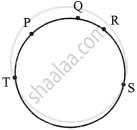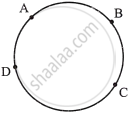Topics
Geometrical Constructions
- Concept of Angle Bisector
- Drawing a Perpendicular to a Line at a Point on the Line
- The Property of the Angle Bisectors of a Triangle
- Perpendicular Bisectors of the Sides of an Acute-angled Triangle
- Perpendicular Bisectors of the Sides of an Obtuse-angled Triangle
- Construction of Triangles
- Constructing a Triangle When the Length of Its Three Sides Are Known (SSS Criterion)
- Constructing a Triangle When the Lengths of Two Sides and the Measure of the Angle Between Them Are Known. (SAS Criterion)
- Construct a Triangle Given Two Angles and the Included Side
- Construct a Right-angled Triangle Given the Hypotenuse and One Side
- Congruence Among Line Segments
- Congruence of Angles
- Congruence of Circles
Multiplication and Division of Integers
- Concept for Natural Numbers
- Concept for Whole Numbers
- Negative and Positive Numbers
- Concept of Integers
- Concept for Ordering of Integers
- Addition of Integers
- Subtraction of Integers
- Multiplication of a Positive and a Negative Integers
- Multiplication of Two Negative Integers
- Multiplication of Two Positive Integers
- Division of Integers
HCF and LCM
Angles and Pairs of Angles
Operations on Rational Numbers
- Rational Numbers
- Addition of Rational Number
- Additive Inverse of Rational Number
- Subtraction of Rational Number
- Multiplication of Rational Numbers
- Division of Rational Numbers
- Rational Numbers Between Two Rational Numbers
- Decimal Representation of Rational Numbers
- BODMAS - Rules for Simplifying an Expression
Indices
- Concept of Exponents
- Concept of Square Number
- Concept of Cube Number
- Laws of Exponents
- Multiplying Powers with the Same Base
- Dividing Powers with the Same Base
- Taking Power of a Power
- Multiplying Powers with Different Base and Same Exponents
- Dividing Powers with Different Base and Same Exponents
- Numbers with Exponent Zero, One, Negative Exponents
- Miscellaneous Examples Using the Laws of Exponents
- Crores
- Finding the Square Root of a Perfect Square
Joint Bar Graph
- Concept of Joint Bar Graph
- Interpretation of a Joint Bar Graph
- Drawing a Joint Bar Graph
Algebraic Expressions and Operations on Them
- Algebraic Expressions
- Terms, Factors and Coefficients of Expression
- Like and Unlike Terms
- Types of Algebraic Expressions as Monomials, Binomials, Trinomials, and Polynomials
- Addition of Algebraic Expressions
- Subtraction of Algebraic Expressions
- Multiplication of Algebraic Expressions
- Multiplying Monomial by Monomials
- Multiplying a Monomial by a Binomial
- Multiplying a Binomial by a Binomial
- Equations in One Variable
Direct Proportion and Inverse Proportion
Banks and Simple Interest
Circle
- Concept of Circle
- Circumference of a Circle
- Relationship Between Circumference and Diameter
- Arc of the Circle
- Central Angle and the Measure of an Arc
Perimeter and Area
Pythagoras’ Theorem
Algebraic Formulae - Expansion of Squares
Statistics
Arc of the Circle
A chord divides the circumference of a circle into two parts and each part is called an arc.
Minor Arc: The arc that is less than the semicircle is called a minor arc.
Major Arc: The arc that is greater than the semicircle is called the major arc.
Semicircular arc: A semicircular arc is half of a circle that measures 180 degrees.
- An arc is a part of the circumference of a circle.
- A chord divides the circumference of a circle into two parts, and each part is called an arc.
- In the figure given above, chord PQ divides the circumference into two unequal arcs, PRQ and PQ.
- The arc which is less than the semicircle is called a minor arc.
- The arc which is greater than the semicircle is called a major arc.
- The measure of a minor arc is equal to its corresponding central angle.
- The measure of a major arc = 360° - measure of the corresponding minor arc.
- The measure of a semicircular arc = 180°
If you would like to contribute notes or other learning material, please submit them using the button below.
Shaalaa.com | Arc of the Circle
to track your progress



